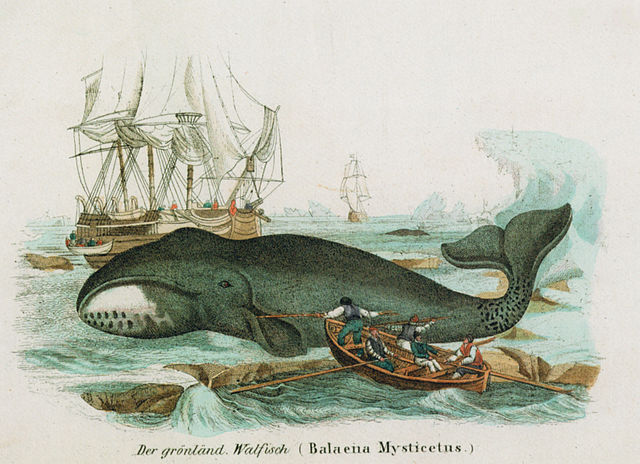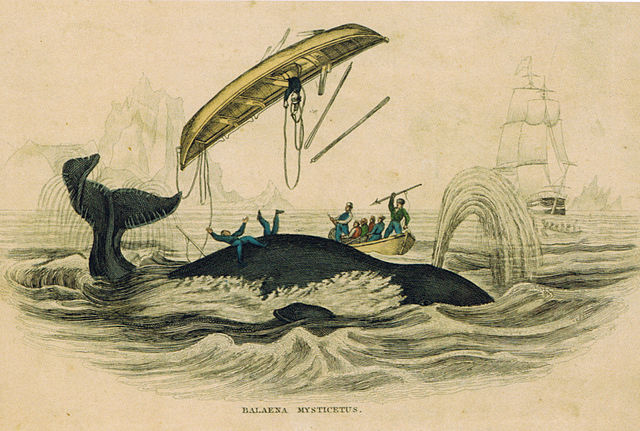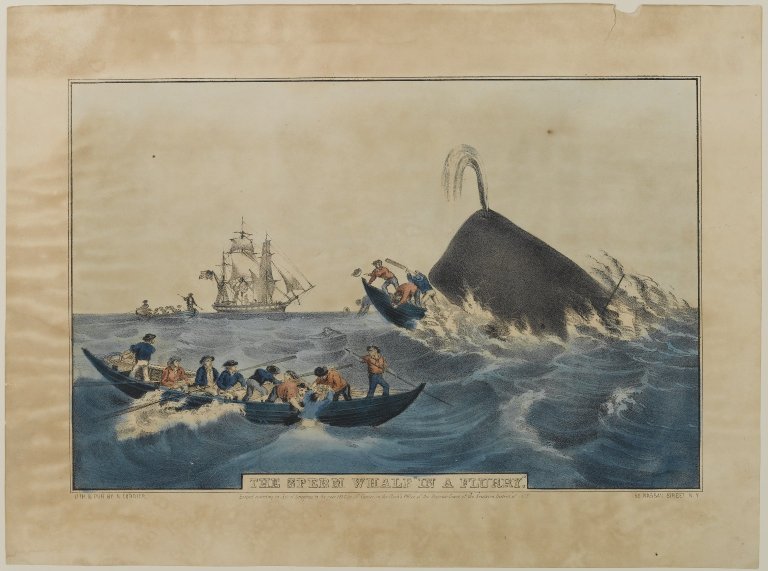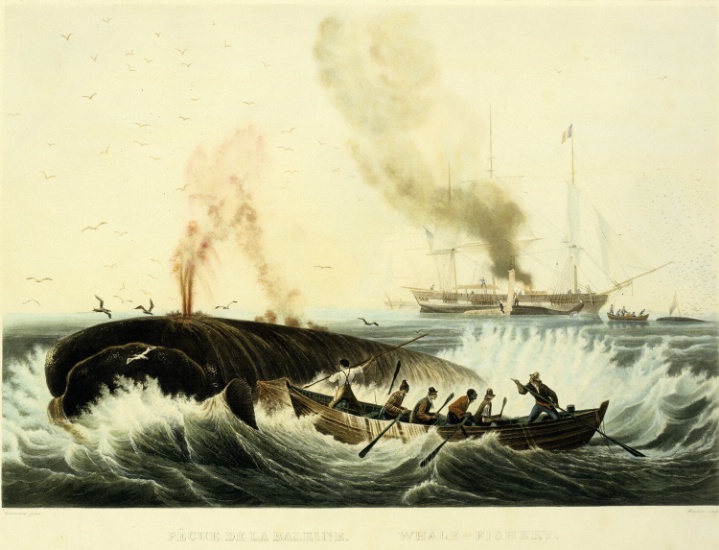
The good news has just been announced that for the first time, a complete translation into Thai language of America’s finest novel is now available in the Thammasat Libraries collection.
In 1851, the author Herman Melville published what is widely considered as the best American novel, Moby-Dick. It has been enjoyed by many generations of readers, and the Thammasat University Libraries own a few copies of this great book. Until now, there has never been a complete translation of this book into the Thai language because of its length, over 600 pages. The Thai translator Kwanduang Sae-tia worked for three years to translate it all into Thai, assisted by an editor, Montree Phoomee. The project was successfully crowd-funded by the publisher Unlimited Literature, founded by Kittiphol Saragganonda and Warong Lupaiboon, and co-managed by the online bookseller Readery.
The plan attracted over 700 subscribers who will receive a copy of the printed book in exchange for paying at least 700 baht each, covering the total cost of the project. The subscription is now over 100 percent, and the book will be printed this summer. It is to be hoped that the TU Libraries will acquire a copy of this book when it is available. The Readery website already offers a reading sample for anyone curious to see what Herman Melville’s prose looks like in Thai characters. Unlimited Literature is a highly serious publisher; they previously produced a translation into Thai language of Plato’s Republic, a philosophical work of ancient Greece. Khun Kittiphol told the Bangkok Post: “There were a couple of Thai editions of Moby-Dick before — I remember reading it as a teenager. But it was the abridged version, not the full, complete Moby-Dick. We’re not translating the book in order to sell it. The crowdfunded project is mainly to support the translation, because the text will be made free. We believe classic literature should be made available to everyone in a language that can be accessed by a lot of people…I grew up with modern classics, and 19th-century literature is a frontier that I feel under-explored [in the Thai language]. Once you’ve read Moby-Dick, you can never run out of conversation topics. It’s a romantic adventure, but it’s also philosophy, politics, sociology, and is a portrait of capitalist cruelty. There are so many ways to interpret the book.”

Many adaptations.
Moby-Dick; or, The Whale (1851), the book’s full title, has been adapted dozens of times on screen and television. The story tells of Captain Ahab, the commander of a whaling ship. Ahab is obsessed with killing a giant white whale that bit off one of his legs. Ishmael, a sailor who narrates the story, describes aspects of life on a whaling ship in the 19th century. The whale’s name is Moby-Dick, which may seem like an odd name for a whale. In the 1830s a real-life whale was notorious for attacking ships and sailors around Mocha Island in Chile. That whale was nicknamed Mocha Dick, just as it might have been called Mocha Jack or Mocha Harry. For his novel, Melville changed the name Mocha to Moby, which had no special meaning, for reasons that are still not understood. This book remains fascinating despite its length because Melville was a fine poet in addition to being a novelist, and he wrote beautiful prose much influenced by the Bible and Shakespeare. There is also humor in Moby-Dick, such as when Ishmael finds that he must share a bed with a scary tattooed harpooner. Some readers have complained that they do not care to know so much detail about whales and how they were caught and killed in the 1800s, yet the richness of information in Moby-Dick, in parts based on genuine fishing accounts, helps make the book lively and convincing. As Khun Kittiphol states: “Ahab is a great character, a mysterious, crazy man on a mad hunt. I want to know more about him — more than Ishmael, who narrates the story. I believe that people should be able to read this book and feel the curiosity and excitement.” After the text is fully edited and notes are added for the benefit of the Thai reader, the book will be made available for anyone who wishes to reprint it under a creative commons license, as long as the translator is credited in future reprints.

Readers who would like to know more about Melville but may not have the time to read Moby-Dick may wish to try one of the author’s most famous short stories, Bartleby the Scrivener. A scrivener was a copyist who worked in offices where documents had to be carefully transcribed by hand before typewriters were invented. The main character Bartleby, as described in Melville’s story, finds a job in a lawyer’s office and anyone who has worked in an office may recognize aspects of office life that have not changed much since 1853, when Bartleby was written. Readers who do not have time for a short story might look at Melville’s short poems, including some which express strong emotions about the American Civil War.
Whales in Thailand
Whales have long played a role in the natural world of Thailand. Last year nature lovers were thrilled to observe up to 20 rare Bryde’s whales in the Gulf of Thailand. A single Bryde’s whale weighs approximately 17 tons. In 2012, it was estimated that only about 20 were still living in the Gulf of Thailand. The Thai Department of Marine and Coastal Resources explains that limits placed on fishing during the June and July spawning season for the whales gave them more food than usual.

As one excited whale watcher in the Gulf of Thailand reported in 2012: “I felt as if they were swimming under the boat, or coming up for air near the boat unexpectedly, blowing with a loud ”whoosh” sound like an elephant spouting water from its trunk. The spray caught our skin, together with the smell of its breath which was not very inviting. After it has rounded up the fish, it will lunge up to eat. We couldn’t tell where it would appear. Its head would come up at a right-angle before opening its jaws to spoon the fish into its mouth, while some small fish would try to jump out. Its appearance was totally unpredictable. A Bryde’s whale comes up at a right-angle first, then slowly open its jaws to an almost 180-degree angle. Its lower jaw acts like a huge net. Inside its mouth are hundreds of small fish trying to jump out to escape becoming dinner. After a while it closes its mouth, expelling water through its ventral pleats before submerging again gently. Sometimes it skims the surface to eat, especially in shallower water where it can’t get perpendicular. Usually they feed on the right side, and sometimes they flop into the water with a huge splash.”
Preserving whales in Thailand.
As the Animal Welfare Institute, a Washington, DC-based organization announced in 2011, Bryde’s whales are a “familiar sight to Thai fishermen and villagers along the upper Gulf of Thailand. Many fishermen and others, in fact, revere them. According to Dr. Kanjana Adulyanuosol of Thailand’s Marine and Coastal Resources Research Center (MCRC) in Samut Sakhon Province, ‘Many Thai people respect the whales as “gods of the sea” – owing perhaps to their huge size and mysterious life history.’ She adds that ‘In some areas, if a dead whale is found, the body is buried following a Buddhist ceremony similar to that conducted for humans. In the past, when the skeletons of the whales were found, people brought them to deposit in the temples or government institutions. About a hundred whale skeletons, both Bryde’s and Omura’s whales, are kept in Buddhist temples and institutions – including a 100-year-old specimen in Nakhon Si Thammarat Province in southern Thailand.’”

(all images courtesy of Wikimedia Commons).
